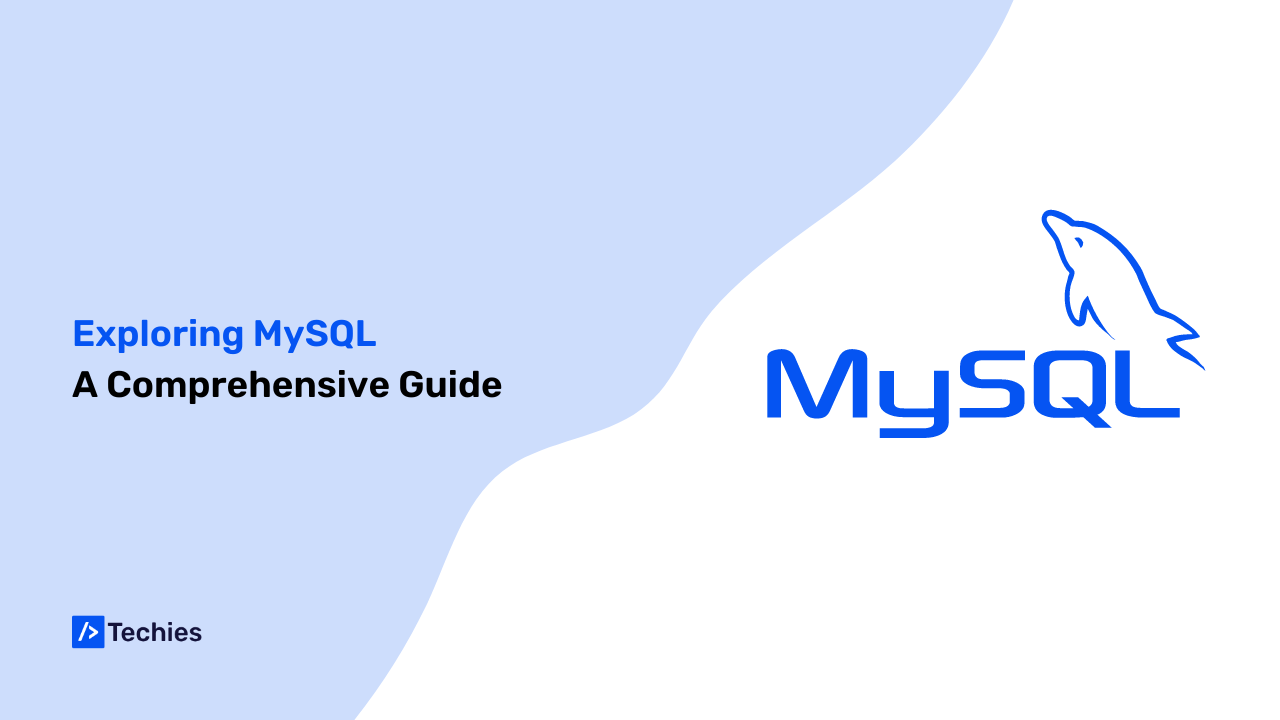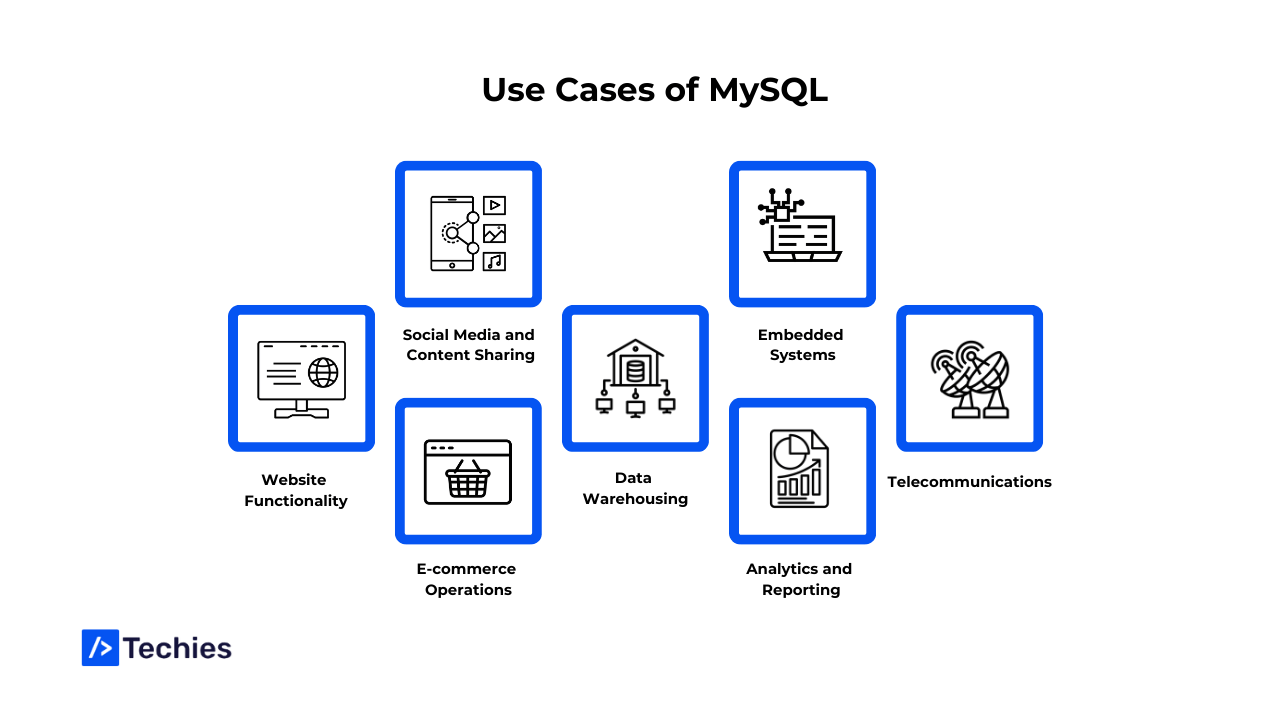
Within the realm of database management systems, MySQL stands as a robust pillar, commanding significant acclaim and extensive integration among both developers and businesses. But what exactly is MySQL, and why is it considered a cornerstone in modern database management? In this comprehensive guide, we’ll delve deep into the world of MySQL, exploring its origins, functionalities, use cases, and benefits to provide you with everything you need to know about this powerful DBMS.
What is MySQL?
MySQL is an open-source (RDBMS) relational database management system (RDBMS) that is renowned for its reliability, scalability, and ease of use. A database functions as an organized reservoir of information, accommodating anything from basic stock lists to intricate corporate infrastructures. Specifically, a relational database organizes data according to the relational model, where tables are comprised of rows and columns, adhering to strict logical relationships between data elements. An RDBMS, therefore, encompasses the suite of software tools necessary to implement, manage, and query such a database.
MySQL, as an RDBMS, is instrumental in myriad software stacks, from customer-facing web applications to robust, data-driven B2B services. Its open-source framework, stability, and extensive feature set, coupled with ongoing support from Oracle, have made it a preferred choice for internet-critical organizations such as Facebook, Flickr, Twitter, Wikipedia, and YouTube, all of which rely on MySQL backends.
- Current Developer: Oracle Corporation
- Original Developer: MySQL AB (Later acquired by Sun Microsystems)
- Current Stable Release:
- Original Release: May 23, 1995
- License: GPLv2 (or proprietary)
- Primary Language: C and C++
- Website: MySQL Official Website
- Open-source Repository: MySQL on GitHub
Keys Features of MySQL
MySQL, being the most widely used database management system across various industries, demands a comprehensive understanding from both novice webmasters and seasoned managers. To effectively evaluate its suitability for use and communicate its merits, it’s imperative to grasp MySQL’s fundamental characteristics, including availability, structure, philosophy, and usability.

Widely Compatible
Relational Databases
Open-Source Nature Relational Databases
Ease of Use
SQL vs. MySQL: Understanding the Difference
The relational model, pioneered by Edgar F. Codd in a seminal 1970 paper, laid the groundwork for structured data management. Soon after, IBM introduced SQL, one of the earliest commercial programming languages based on this model. SQL quickly gained traction, becoming an ANSI standard in 1986 and subsequently an ISO standard a year later.

SQL comprises four distinct sublanguages, each serving a specific purpose
- DQL (Data Query Language): Primarily used for querying databases and retrieving information from stored data. For instance, executing queries to select and return the maximum value in a column.
- DDL (Data Definition Language): Used to define a database's structures and schemas. Tasks like creating tables and specifying data types fall under this category.
- DCL (Data Control Language): Governs access, authorizations, and permissions for users and processes interacting with the database. It includes granting administrator privileges or restricting users to read-only access.
- DML (Data Manipulation Language): Enables modifications to existing database components, such as inserting records, updating cell values, or deleting data.
MySQL, introduced by Swedish company MySQL AB in 1995, emerged as a significant player in the database landscape. Like many subsequent database systems, MySQL builds upon the original SQL standard, augmenting it with additional features, support for procedural programming, control-flow mechanisms, and more.
Use Cases of MySQL
MySQL serves a multitude of purposes across various industries

Website Functionality
E-commerce Operations
Data Warehousing
Social Media and Content Sharing
Analytics and Reporting
Telecommunications
Embedded Systems
Conclusion
The extensive adoption of MySQL in the tech industry can be attributed to its versatility, high performance, and reliability. Its status as an open-source platform, combined with an active community and ongoing enhancements, positions it as the preferred database solution for businesses and developers seeking robustness and scalability.
Mastering its fundamental principles empowers users to manage and harness MySQL’s capabilities within their applications efficiently. For professional MySQL assistance and support, contact DTechies, your trusted partner in database solutions. Our team of dedicated experts is offering complete Assistance and advice customized to meet your unique requirements.
Unlock the full potential of MySQL for your business today!
Contact us now to discover how we can elevate your database performance.
FAQ's
What makes MySQL stand out among other database management systems?
MySQL stands out for its versatility, performance, and reliability. Its open-source nature, combined with a vibrant community and continuous improvements, makes it a go-to choice for developers and enterprises looking for a robust and scalable database solution.
Can MySQL be integrated with other technologies and platforms?
Yes, MySQL is highly compatible and seamlessly integrates with various technologies and architectures. It operates across major computing platforms such as Unix-based systems like Linux and macOS, as well as Windows. Moreover, MySQL supports integration with virtualized environments and standalone libraries.
Is MySQL suitable for managing large datasets in data warehousing solutions?
MySQL plays a crucial role in data warehousing solutions by efficiently storing and analyzing vast datasets. Its support for data aggregation, querying, and reporting makes it a preferred choice for businesses dealing with extensive data volumes.
How user-friendly is MySQL for beginners?
MySQL is known for its ease of use despite its relational structure. Its tabular paradigm fosters intuitive usability, accommodating a wide range of data structures. Additionally, the MySQL ecosystem offers an array of tools for server management, reporting, and data analysis, making it accessible to beginners.
Is professional Assistance available for MySQL implementation and optimization?
Yes, professional Assistance for MySQL implementation, optimization, and troubleshooting is available. DTechies, a trusted partner in database solutions, offers comprehensive support and guidance tailored to specific needs. Contact DTechies to schedule a consultation and elevate your database performance.

ABOUT AUTHOR
Roopesh Jain
Subscribe to Our Newsletter
Let's Work Together
Office Location
1042, Second Floor, Sector-4, Hiran Magri, Udaipur, Rajasthan - 313002